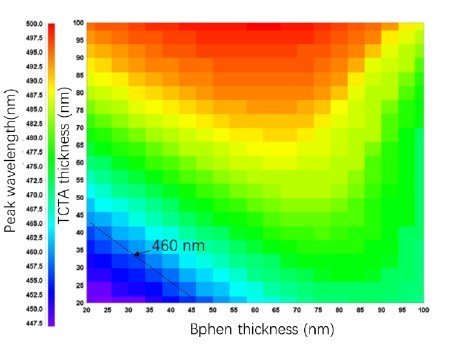Light regulation of organic lightemitting diodes with conductive distributed Bragg reflectors
Yun Hu, Jing-song Huang, Paul N. Stavrinou, Donal D. C. Bradley, Proc. SPIE 12314, Optoelectronic Devices and Integration XI,
123140O (20 December 2022); doi: 10.1117/12.2641624
Organic-oxide hybrid DBRs achieve high conductivity & light manipulation in organic optoelectronic devices. MoO3 doping increases TAPC conductivity by 10,000x with minimal refractive index change. Integrated OLEDs with bottom conductive DBRs demonstrate light regulation at low voltage.
The optical simulations of DBR and OLED devices were performed by using a commercially available SETFOS (Fluxim) program. The refractive index, extinction coefficient (k), photoluminescence (PL) spectrum of emissive layers and thickness of each layer were used as input parameters. Transfer matrix method (TMM) and Gaussian dipole distribution dipole emitter as source are used in simulation.

